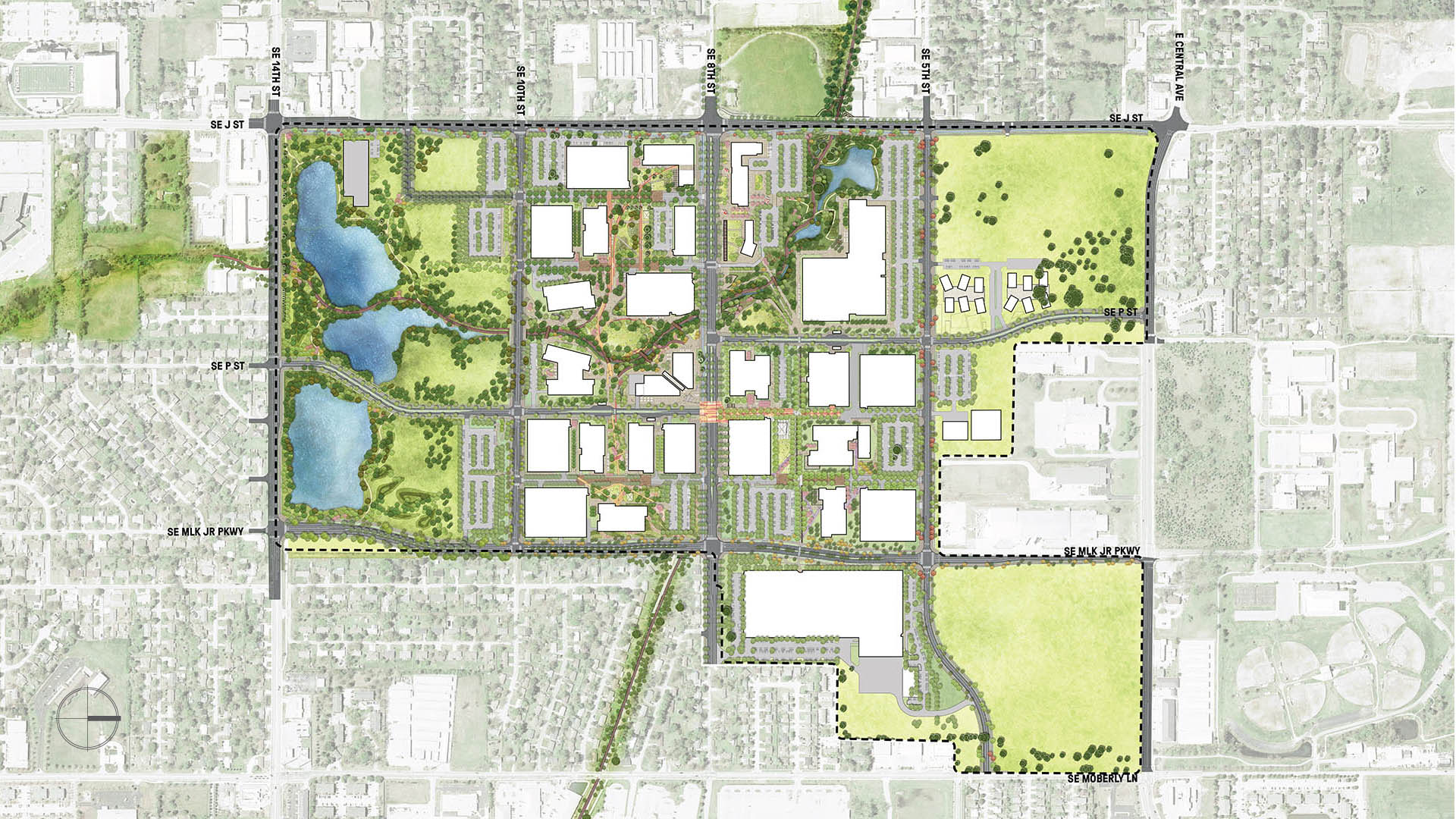As Walmart evolves in response to a changing workforce and focus on sustainability, the company’s new Home Office campus in Bentonville captures these values over 350 acres—both a blueprint for ecologically sensitive campus design and a renewed anchor at its origin in the Ozarks. More than a headquarters, the campus is a major regional investment for Northwest Arkansas at large and a hub for thousands of associates living within biking distance of work, providing climate-friendly commuting options and setting an ambitious target of 10% of staff biking to work.
Central to the design is a forested greenway that runs through the heart of campus, paying homage to the limestone-banked seasonal creeks that once wove across the site and seamlessly connecting to the 40-mile Razorback Regional Greenway. Over 13 acres of constructed lakes and bioswales at the North and South ends of campus collect, filter, and redistribute stormwater across a vast irrigation system, providing over 52 million gallons of water annually and minimizing impacts to the city’s potable water supply. The plan also carefully preserves mature canopy in place and relocates trees across campus, integrating native Arkansan ecologies like highlands forest, bluestem prairies, seasonal wetlands, and pollinator habitats throughout.
Guided by the idea of “Big Nature” (a nod to the state’s nickname), the Home Office carries this environmental ethic from the campus’ sprawling forests and meadows to the facilities themselves, which include 12 office buildings, a fitness center, childcare center, food hall, hotel, central conference and training hall, and more—largely built with mass timber. A cohesive network of complete streets, shaded walkways, and bike paths knit the facilities together and connect it to Bentonville with a range of micro-mobility options. Elevating Walmart’s culture, heritage, and core values, the Home Office aims to model the next generation of sustainability-driven corporate campus design, cementing the company’s legacy in the Natural State.
Construction on the Walmart Home Office campus began in 2019 with anticipated completion of most features in 2025.
_____
In the media:
Nanjing Tech Campus
This industrial park, located in Nanjing’s prominent Hongshan District, is an iterative upgrade of Shenzhen Galaxy World that will activate industry and finance city innovation. SWA proposed a “rivers and stars” design concept for the north and south commercial districts respectively, creating an attractive, flowing, high-quality commercial landscape for this ...
Symantec Chengdu
SWA provided landscape design for Symantec’s research and development complex. The site was previously inactive and banal until SWA’s design reinvigorated the area, linking the building program and connecting the site to the larger city. The landscape design produces a “brocade,” weaving together the building and site program, and offering an oasis amid the de...
Poly International Plaza
Poly International Plaza is an innovative office, retail, and exhibition center development located in the Guangzhou trade district. Sited along the Pearl River and adjacent to historic Pazhou Temple Park, the project presents a precedent toward integrating development with its site and context, embracing the place of garden and sustainability in the society’s...
Google Headquarters
As a winner of the ASLA’s Centennial Medallion, this project is recognized as one of the most significant landscapes of the last century. The former SGI campus, acquired by Google in 2004, and the adjacent Charleston Park, comprise a 26-acre brownfield site. The design creates a strong identity for the campus and provides a much-needed civic space, blurring di...














